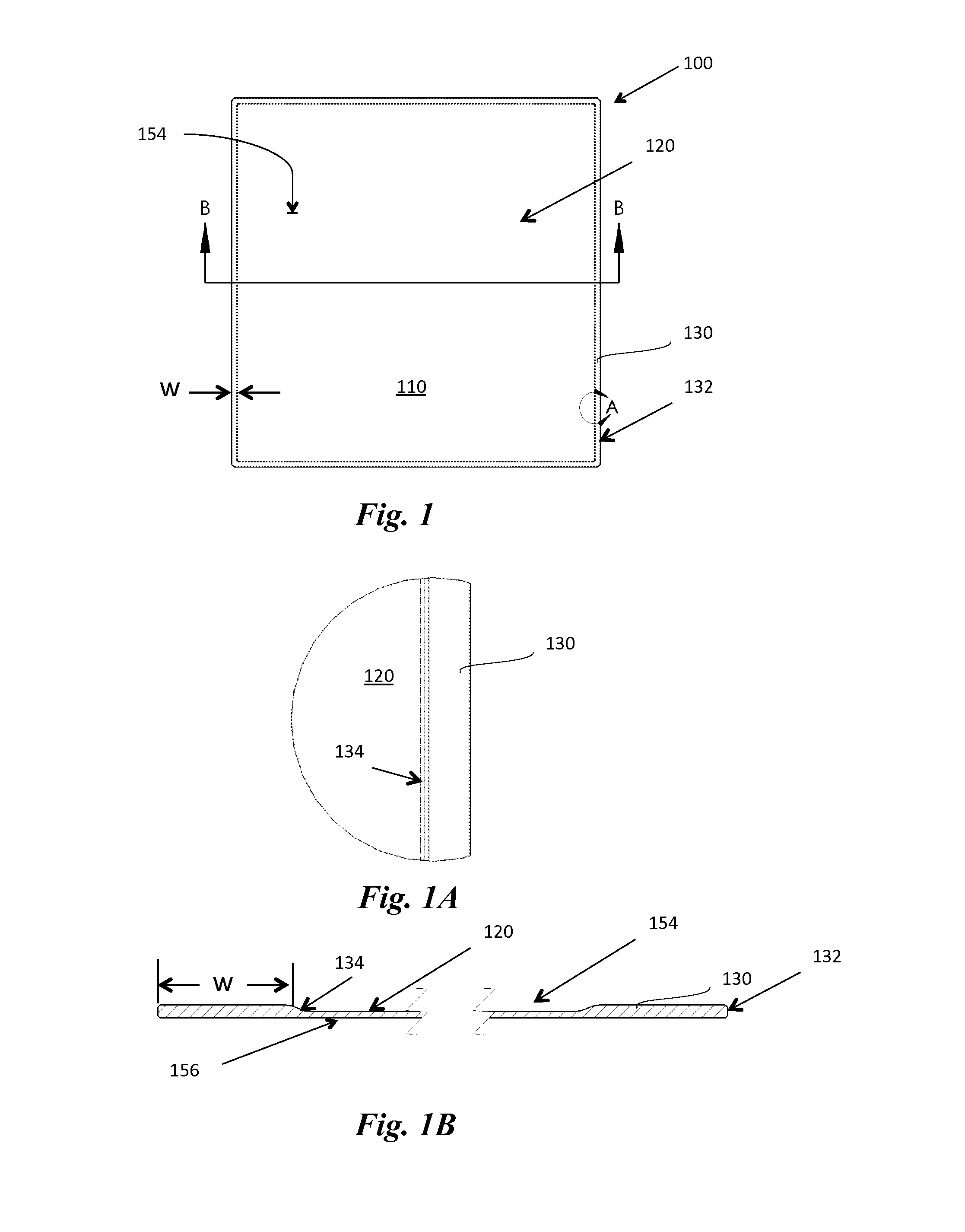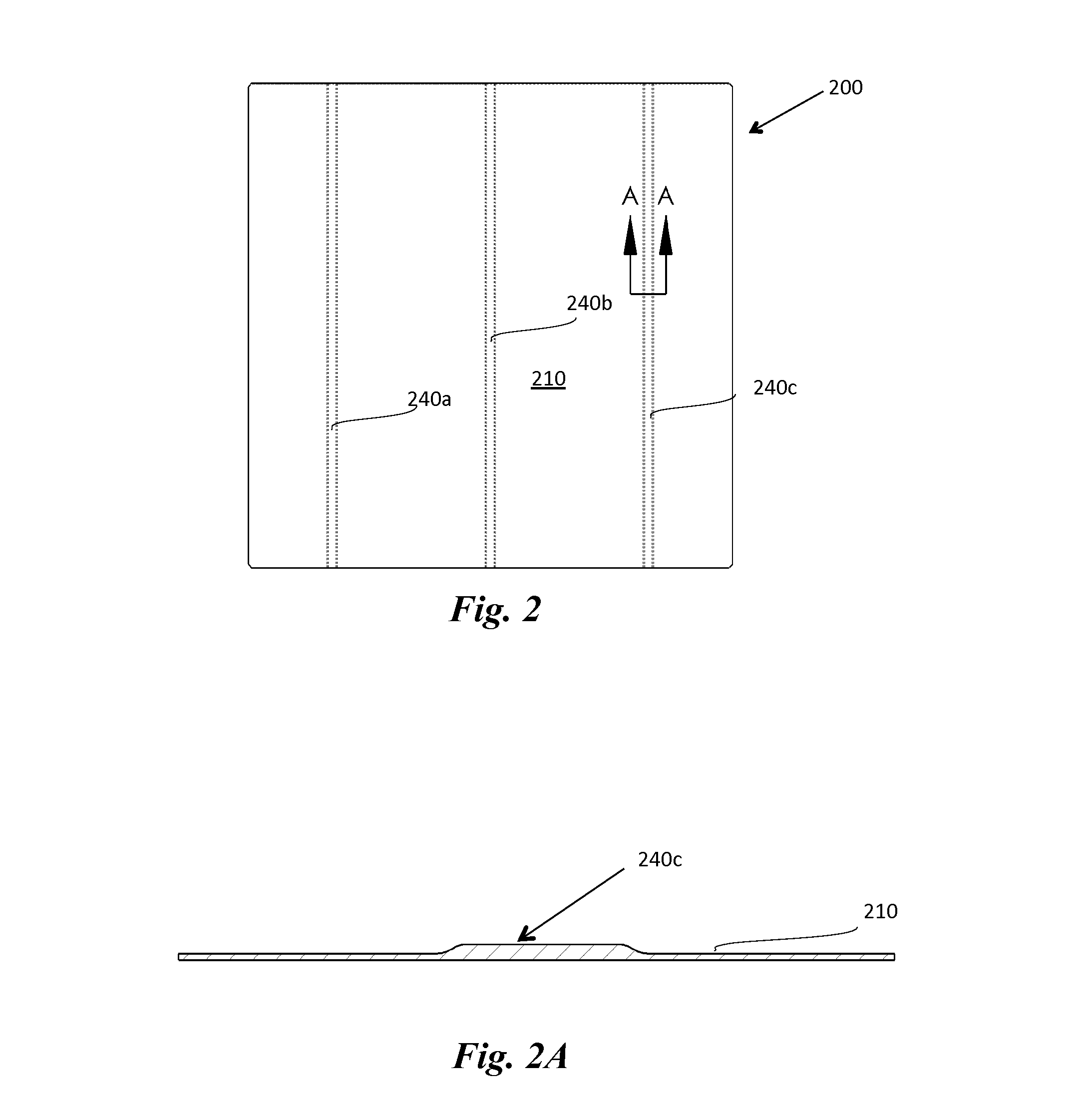Methods and apparati for making thin semi-conductor wafers with locally controlled regions that are relatively thicker than other regions and such wafers
a technology of semi-conductor wafers and local control, applied in the direction of sustainable manufacturing/processing, polycrystalline material growth, final product manufacturing, etc., can solve the problems of reducing the electronic affecting the quality causing the loss of thin semiconductor wafers, etc., to achieve less risk of damage, less cost, and less cost
- Summary
- Abstract
- Description
- Claims
- Application Information
AI Technical Summary
Benefits of technology
Problems solved by technology
Method used
Image
Examples
Embodiment Construction
[0090]Inventions disclosed herein relate to semi-conductor wafers and methods of forming such wafers. They are particularly applicable to semi-conductor wafers for use in photovoltaic assemblies, and methods of fabricating such wafers and such assemblies, although they can be used for formation of wafer-like articles for other uses. Silicon wafers are discussed as an example, but the inventions are not limited to silicon as the semi-conductor. Similarly, although photovoltaic uses are discussed as exemplary, the methods disclosed herein can be used with any semi-conductor article manufactured from a volume of molten material, using a porous body such as a template described herein where it is desired to have regions that are thinner than others, which are thicker, and also, in particular, where the thin regions are quite thin, and are strengthened to some extent by presence of the thickened regions.
[0091]As discussed above, inventions disclosed herein can relate in general to wafers...
PUM
| Property | Measurement | Unit |
|---|---|---|
| thickness | aaaaa | aaaaa |
| thickness | aaaaa | aaaaa |
| thickness | aaaaa | aaaaa |
Abstract
Description
Claims
Application Information
 Login to View More
Login to View More - R&D
- Intellectual Property
- Life Sciences
- Materials
- Tech Scout
- Unparalleled Data Quality
- Higher Quality Content
- 60% Fewer Hallucinations
Browse by: Latest US Patents, China's latest patents, Technical Efficacy Thesaurus, Application Domain, Technology Topic, Popular Technical Reports.
© 2025 PatSnap. All rights reserved.Legal|Privacy policy|Modern Slavery Act Transparency Statement|Sitemap|About US| Contact US: help@patsnap.com



